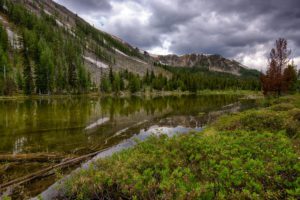Media contacts:
Sharon Selvaggio, Xerces Society for Invertebrate Conservation
(503) 704-0327 | sharon.selvaggio@xerces.org
Jocelyn Leroux, Western Watersheds Project
(406) 960-4164 | jocelyn@westernwatersheds.org
BILLINGS, Mont. – The U.S. Department of Agriculture’s Animal and Plant Health Inspection Service (APHIS) is currently soliciting contract bids for insecticide sprays across Eastern Montana. More than 2.6 million acres of Montana grasslands are identified in the bids as potential areas for aerial sprays, to suppress native species of grasshoppers. The insecticides will be applied aerially starting in mid-June, with the drift putting at risk organic farms and a national wildlife refuge adjacent to the proposed spray areas, as well beneficial insects within the spray blocks.
Federal, tribal, and private land in at least sixteen counties of eastern Montana are included in the potential spray areas. The overall area of the planned spray blocks measures more than 4,000 square miles, larger than Delaware and Rhode Island combined, with some individual blocks measuring over 100,000 acres.
“Aerial application of insecticides on this scale will eliminate millions of insects that pollinate, recycle plant nutrients and perform natural pest control,” said Sharon Selvaggio, Pesticide Program Specialist with the Xerces Society. “Insecticide sprays on this scale across native ecosystems are short-sighted and unsustainable.”
Insecticide drift is expected beyond the spray footprint, since due to uneven topography the planes may be flying at 75 feet above ground level, and hot dry conditions expected during application windows can exacerbate off-site movement.
APHIS finalized three public Environmental Assessments on the action in April, and issued a Finding of No Significant Impact for each. However, the Environmental Assessments contained no information regarding the scale of the spray effort, the location of the spray areas, or any analysis of how the project would affect many currently imperiled species present in Montana, such as the monarch butterfly.
Eastern Montana supports between 600 and 900 species of native bees. Western monarch butterflies also breed in the region. The western migratory population of the monarch butterfly has declined by 99.9 percent since the 1980s. No mention of the monarch butterfly or its precipitous decline was made in the Environmental Assessments.
“We don’t even have clear evidence that sprays are effective at minimizing damage to forage, or cost-effective for taxpayers,” said Selvaggio. “If these lands are to serve the multiple uses intended, we need to improve management in a way that minimizes the potential for grasshopper outbreaks and reduces the need for sprays.”
Organic farms affected by chemical drift would risk losing certification, and the farmers would lose the associated income for three years. They also risk disrupting their carefully planned rotations.
Pilots are not required to observe any buffers around certified or transitioning organic acreage unless the landowner has made a specific request. In addition, APHIS is contacting organic farmers in affected counties and has requested that organic farmers submit digital maps of their lands, something many farmers may not have at their fingertips.
It is unknown how many organic or transitioning growers are aware of the proposed spray campaign. Montana is third in the nation in USDA organic certified acres and is the nation’s largest producer of organic wheat, lentils, chickpeas, emmer, and spelt.
The chemical to be sprayed is called diflubenzuron, a restricted-use insecticide that kills developing insects by impeding their molt. While the insecticide is meant to kill grasshoppers, any juvenile insect that ingests the insecticide could be harmed, including insects that naturally keep grasshoppers in check.
Pollinators such as native bees and butterflies have no natural protection against diflubenzuron, and juveniles are vulnerable to injury and death if exposed.The larvae of these beneficial insects are subject to the same eradication from chemical insecticides as the grasshoppers.
Should grasshoppers mature more quickly than expected, the agency will likely use carbaryl, a highly neurotoxic and controversial carbamate insecticide.
Portions of the project area are adjacent to the Charles M. Russell National Wildlife Refuge. APHIS has not disclosed whether the project areas include or are adjacent to Wilderness Study Areas, Areas of Critical Environmental Concern, or other sensitive sites.
“It’s horrifying that the government sprays insecticides from aircraft across the public lands of the West,” said Jocelyn Leroux, Washington/Montana Director of Western Watersheds Project. “They are poisoning the food of grassland birds, including imperiled species like the sage-grouse, for the sake of public lands livestock grazing. It’s destructive to nature and it makes no sense.”
###
For information about the USDA APHIS spraying proposal, go to: https://sam.gov/opp/
Read more about the threats grasshopper sprays pose to beneficial insects and birds: https://xerces.org/blog/
Learn more about the importance of grasshoppers to rangeland ecosystems and the impact of control programs in the spring 2021 issue of the Xerces Society magazine, Wings: https://xerces.org/
About the Xerces Society
The Xerces Society for Invertebrate Conservation protects the natural world by conserving invertebrates and their habitat. Established in 1971, the Society is a trusted source for science-based information and advice and plays a leading role in protecting pollinators and many other invertebrates. Our team draws together experts from the fields of habitat restoration, entomology, plant ecology, education, pesticides, farming and conservation biology with a single passion: Protecting the life that sustains us. To learn more about our work, please visit xerces.org or follow us @xercessociety on Twitter, Facebook or Instagram.
About Western Watersheds Project
Western Watersheds Project is a nonprofit environmental conservation group dedicated to protecting and restoring wildlife and watersheds throughout the American West.






